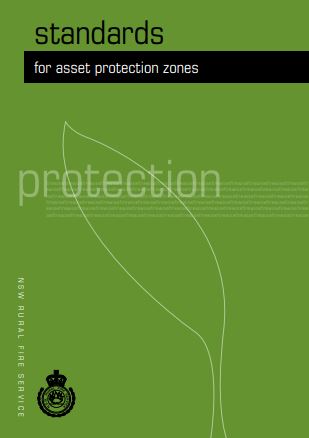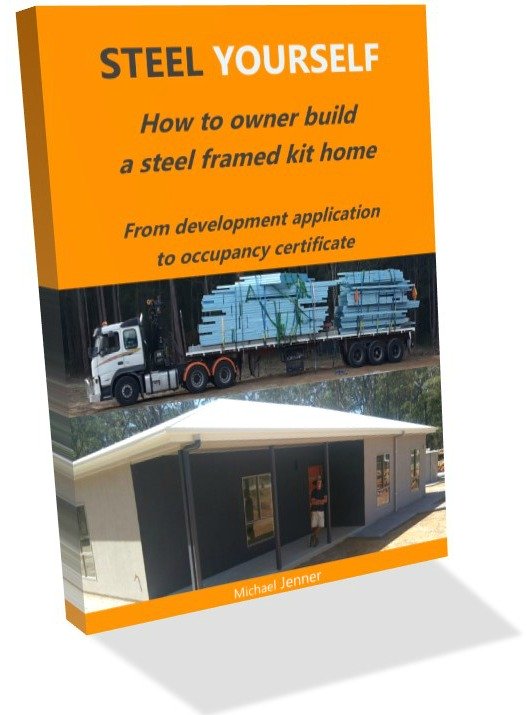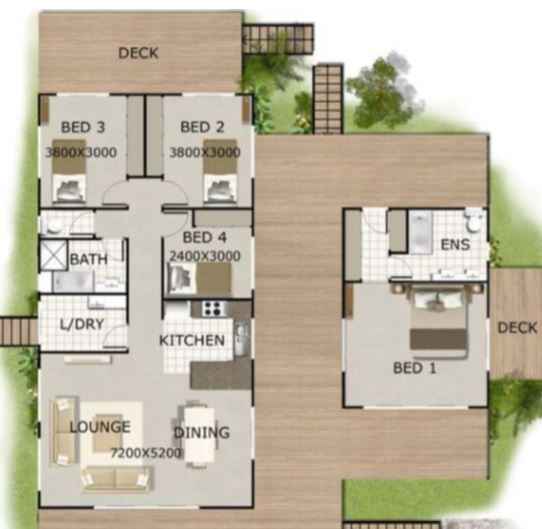Fire safety protection
for build your own home kits

Owner builders require bush fire safety protection, especially when building in bushfire prone areas. As part of a Development Application to build a new home, a Bushfire Management Statement must be formulated, which includes a fire rating and construction provisions.
Additionally, a new home built in bushfire prone areas should have a bushfire management plan, which will include land preparation and maintenance, appliances, water access, survival plans and fight or flee provisions.
So how do you fire-rate a property?
A bushfire assessment is needed and the council authority in your area will have assessment rating calculators that will help determine a bushfire attack level (BAL). Here are some assessment tools from the NSW Rural Fire Service.
Step 1: Determine vegetation/forest types around the building
Step 2: Determine the distance between each vegetation formation and the building
Step 3: Determine the effective slope
Step 4: Determine the relevant Fire Danger Index (FDI)
Step 5: Match the relevant FDI, appropriate vegetation, distance and effective slope to determine the appropriate Asset Protection Zone, BAL and level of construction.
What is an APZ?
An asset protection zone (APZ) is an area between a bush fire hazard and the building, which is managed to minimise fuel loads, inhibit a fire path and reduce the effects of heat, flame, ember and smoke attack. Put simply it keeps the effects of the fire away from the building. The size of the APZ is based on vegetation type, slope and levels of construction.
In my case the APZ was based on my intention to clear half a hectare (1.5 acres) of my 2 hectare (5 acre) property for the home site. With a 5% up-slope, dry sclerophyll forest, area FDI of 80, and 35 metres from the house site to the forest, my BAL calculation was '29'.
What do BAL levels mean?
In Australia, BAL's start at low (minimal), then 12.5, 19, 29, 40 and 'flame zone'. The level relates to the attack from radiant heat and flame measured in Kilowatts per square metre eg 12.5 KW/SqM. Each level has corresponding construction requirements to meet the danger level. Here is a PDF BAL Chart.
Fire safety protection: meeting BAL construction requirements
The construction requirements for my BAL were set out in the Australian Standard As3959.2009, Section 7: Construction for Bushfire Attack Level 29. Those fire safety protection standards were:
- Concrete slab floor (no sub flooring)
- Steel frame walls and roof
- Double sided foil sarking on the outside of the frame
- Fibre cement blue board cladding butt jointed and rendered
- Colorbond metal roof
- 50mm thick foil-backed fibreglass insulation blanket
- Steel fascia, gutter and downpipe system
- Steel gutter guard
- Fibre cement sheet eaves with steel vents and steel screens
- Metal window frames with toughened 5mm glass and stainless steel insect screens
- Solid timber external doors with 5mm toughened glass, fire resistant paint to doors, and metal treads
- Metal sliding doors with toughened 5mm glass and stainless steel insect screens
- Smoke and fire detectors
- Rolled steel water tanks
- Steel garage
- Fire retardant vegetation around site
The higher the BAL, the more requirements needed. Most council authorities will now deny DA submissions of BAL 40 or above. So forget about building a cosy private retreat inside a forest.
Hot tip: Mention your list of construction upgrades and fire hazard reductions to receive a lower fire insurance quote.
How to ensure bush fire safety protection
A bushfire plan to increase your fire safety protection has these elements:
1. Appliances and water to fight fire
-Consider purchasing a fire pump and fire hoses. Mains water pressure reduces dramatically during fire events, and electricity often fails so electric pumps wont help
-A fire protection system in your new house: extinguishers, blankets, detectors, fire doors, ember guards
-Raise the water tank outlet so at least 10,000 litres (2 to 3000 gallons) is retained for bushfire fighting
-Consider a dam to supply roof sprinklers
2. Maintenance and plantings to increase fire and safety
-keep gutters clear of leaves, the house clear of combustible material eg wood piles, reduce combustible shrubs near the house.
-consider back burning forest acreage with the assistance of the local fire services
-continue to selectively clear saplings and mow grass frequently
-plant fire resistant shrubs and trees (PDF of fire retartant plants)
3. Survival and escape plans
-Assemble a fire fighting kit: appropriate personal protective clothing: hat, glasses, face mask / bandana, gloves, boots, and drinking water. Have shovels, hoses, ladders, wet 'thwakers' and other fire fighting products available. Personal water pump sprayers are useful as well.
-Assemble a survival/escape pack: 3 days of non perishable provisions, water, radio, torch, a tent and related gear and a pre-determined route of escape,. Also a list of pre-selected documents, contacts, valuables and electronic gear to take with you.
Return to Owner Builder Groundwork or go back to Kithomebasics homepage




